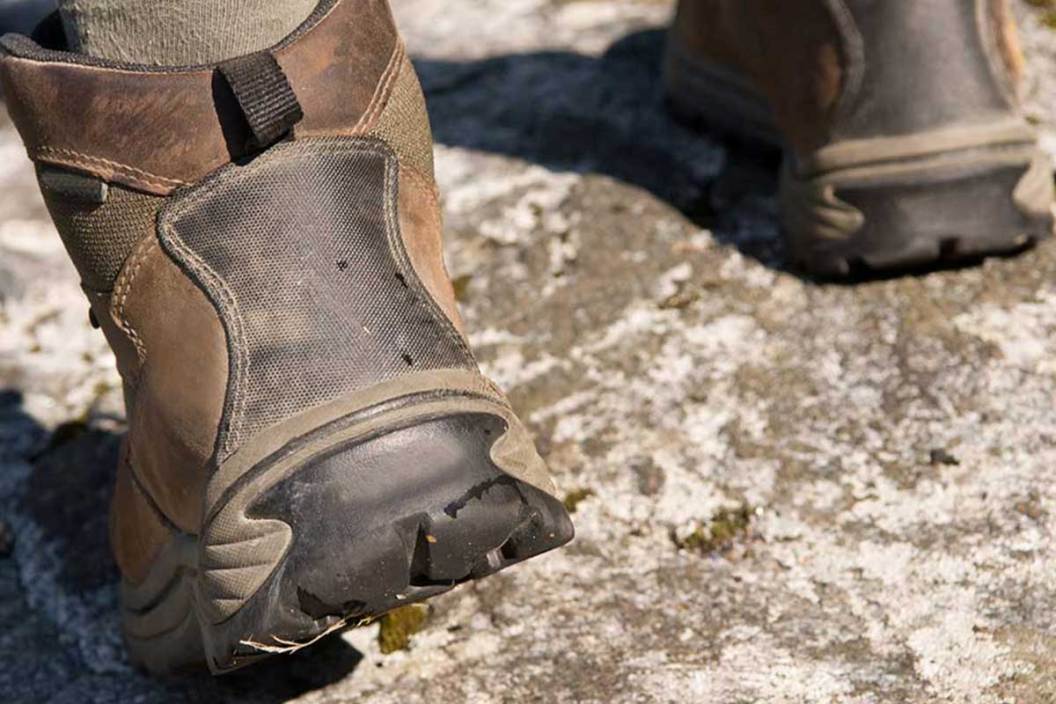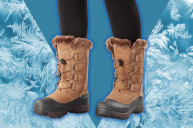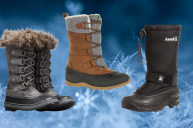If you're going to spend hundreds of dollars on boots, they better be warm.
If you are not familiar with the insulation that goes into a pair of boots, you may get a little lost looking at the details and specs.
To help know what you are looking at on the shelf, this break down will share everything you need to know about hunting boot insulation, and how much insulation is enough for your desired activity. Let's start with how insulation is measured, by weight.
Grams of Insulation
The first thing you are going to see when you look at warm boots is how many grams of insulation they have. This is going to be a number between 0 and 1400. Zero obviously means that they are not insulated. These measurements usually go up in 200 gram increments, so you have some very well-defined levels of insulation.
200 Grams
Boots with 200 grams of insulation are on the lowest end of warmth. This level of insulation does a minimal job of keeping your feet warm in mildly cold temperatures. This level of insulation is actually best for boots you would wear while being continuously active in cool temperatures. This is light insulation that is not going to do a whole lot in terms of adding inherent warmth.
400 Grams
400 gram boots have a similar story to the 200 gram boots. These boots obviously have more insulation and will therefore keep you warmer. However, 400 grams is still fairly light, and good for boots that you are going to wear at low activity levels in colder temperatures. If your feet tend to be a little colder, then these would be the boots you would want for continuous activity in cold temperatures.
600 Grams
Moving up, 600 gram boots are noticeably warmer than the initial 200 grams. These boots are going to keep you warmer in freezing temperatures while moving around. If you are working outdoors in the winter, these boots are the ones that are going to keep your feet warm without making them sweat as much. 600 grams of insulation is about the top of the spectrum for boots that you would wear while working or continuously moving outdoors.
800 Grams
800 grams of insulation is a pivot point between boots you would want to wear while moving around, and boots that you would wear while still hunting. If your feet tend to be a little colder, then this level of insulation is what you would want for working in below-freezing temperatures. If you are a hunter that is just going to sit in a stand for hours, this level of insulation is what you will want to wear for typical fall temperatures, although your feet may sweat on the walk into the stand.
I have worn boots like this in cold temperatures while sitting in the stand for most of the day, and as long as I had some quality socks on, I was fine. Although if the wind is really going and it is below freezing out, your feet are going to be cold in 800 gram insulated hunting boots.
1000 Grams
1000 grams of insulation is pretty standard for the hunter that wants warm boots for below-freezing hunts. This level of insulation is also good for the rubber boots of waterfowl hunters that may need to stand in cold water for an extended period of time. These boots are also good for walking around in the snow.
After getting a little cold in my 800 gram boots, I upgraded to 1000 grams. I would say that 1000 grams of insulation is a good starting point for most hunters that hunt in below-freezing temperatures. If you wear quality socks, these boots can hold up to just about anything, but if your feet still get cold, there is another step up yet.
1200 Grams
1200 grams of insulation is about as much as most hunters would ever need. If you are dedicated(or crazy) enough to sit in a deer stand in below zero temperatures, 1200 gram boots are going to do a good job at keeping your feet warm. This level of insulation is ideal if you are buying a pair of rubber boots that you plan on wearing in extremely cold water, or snow.
Although you will probably need a second pair of boots with less insulation for hunting the warmer parts of the season, because these boots in 50-degree weather may as well be a pair of furnaces on your feet.
1400 Grams
If your feet are usually cold, then you can think of 1400 gram insulation like the 1200 gram insulation boots. Although if your feet are not always freezing, these 1400 gram boots are insanely warm. This level of insulation is suited for the most extreme environments on the planet, and you can wear these boots well into the negative temperatures. It is much more likely that the rest of your body is going to freeze before these boots are not warm enough.
Thinsulate - The King of Boot Insulation
Thinsulate is the typical insulation that is in high-quality boots. Thinsulate does a great job at insulating while staying extremely lightweight. It is a synthetic insulation that is used in a lot of high-performance clothing, and it is what I always look for when I buy hunting boots. Plus, Thinsulate stays warm when it gets wet, so it is perfect for work or hunting boots.
It is important that your insulation is lightweight. If you have two pairs of 800 gram insulation boots and one has Thinsulate, and the other pair does not, then the Thinsulate pair is going to keep you much warmer. Since Thinsulate weighs less, there can be more of it and it can insulate your boots more. In other words, not all boots are created equal. Thinsulate has an amazing warmth-to-weight ratio, and it is the best boot insulator on the market at the moment.
Socks Matter Too
It does not matter what level of insulation you buy, you will also need a quality pair of socks. Merino wool is the go-to material for hunting socks. Not only does it keep you warm when it's dry, but it still stays warm when it is wet.
They will hopefully not get wet from outside moisture, but those waterproof boots are going to keep moisture in just as good as it keeps moisture out. So you need a good pair of merino wool socks to wick up any sweat and further insulate your feet.
A quality pair of socks and boots with around 800 grams of Thinsulate insulation is a great starting point for any hunter. If you know you are going to hunt in below-freezing temperatures more than you are going to hunt above freezing, I would go with 1000 gram boots. Ultimately, it's up to you and your type of hunting for that final decision.




